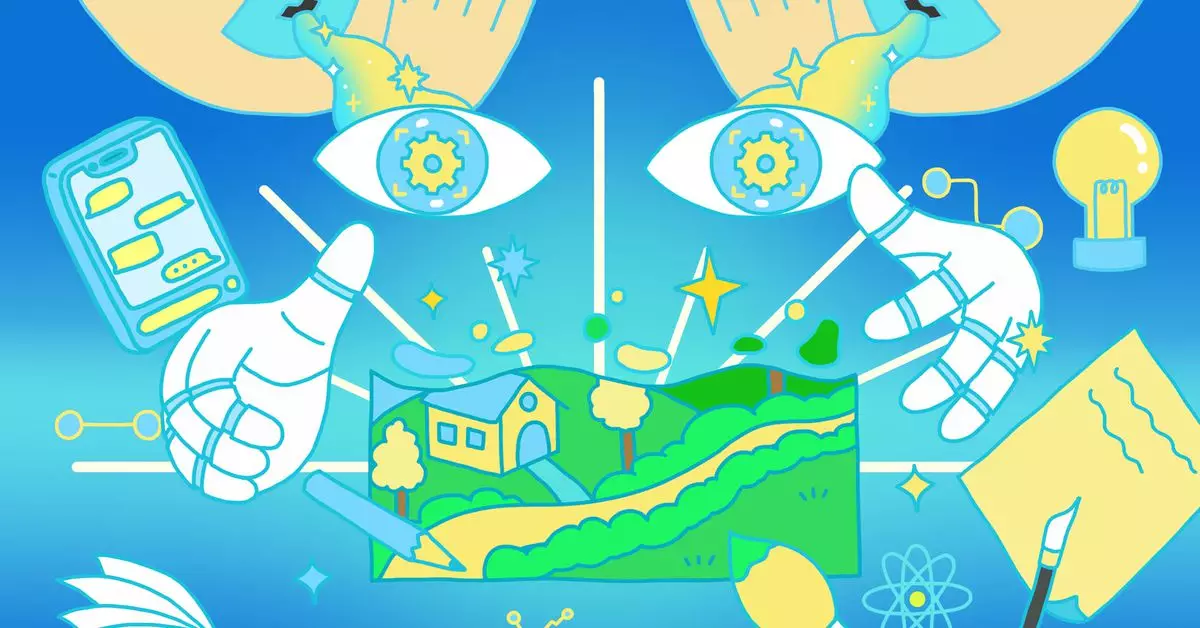In an era where digital manipulation is as easy as tapping a screen, Apple is making waves with its latest image editing solutions in iOS 18.1. The technology company appears to be on a mission to maintain the integrity of photography—a move that reflects broader concerns around authenticity in the age of artificial intelligence. This article delves into Apple’s approach, exploring the implications of their subjective boundaries on image manipulation and the collective responsibility of tech companies in preserving reality.
During an interview with The Wall Street Journal, Apple’s software chief, Craig Federighi, articulated a captivating vision for the future of image editing on the iPhone. At the core of this vision is a feature aptly named “Clean Up,” designed explicitly to remove unwanted elements from photos while preserving the overall integrity and authenticity of the image. Unlike rivals such as Google and Samsung, whose tools often allow users to conjure fantastical elements into their photographs, Apple’s offering is more restrained. This restraint might be seen as a reflection of Apple’s commitment to ensuring that users don’t lose sight of what’s real while experimenting with the digital canvas.
Federighi touched upon the internal debates at Apple surrounding this feature, with his statements revealing a nuanced understanding of the implications behind removing elements from an image. For instance, his recollection of the ongoing discussions about whether to make it simpler to erase items like water bottles or microphones emphasized an ethical dilemma: how to balance user demands for enhanced aesthetics with the necessity of retaining the authenticity of a recorded moment. This approach signifies a partial victory for purveyors of truth over the lure of digital fantasy, showcasing Apple’s preference for cautious innovation that prioritizes authenticity.
The introduction of advanced editing tools has sparked a broader conversation about how artificial intelligence is reshaping our perception of what photography represents. Federighi expressed concern over the increasing capabilities of generative AI technologies that allow users to create visually stunning, yet ultimately fictional, imagery. The impediment such manipulations pose to public trust cannot be overstated—when anyone can add dragons, explosions, or even mundane objects based on mere text prompts, the authenticity of visual media becomes jeopardized. It raises a provocative question: Can we still trust photographs as genuine reflections of reality?
Furthermore, the potential for misuse of AI-powered editing features prompts a call for responsibility among tech companies. Apple’s cautious moves, particularly the tagging of images modified with the “Clean Up” feature, highlight a proactive attempt to preserve digital trustworthiness. By embedding metadata to label altered pictures, Apple ensures that users are informed about the changes made, sidestepping the trend toward deception that can easily proliferate in a digital landscape characterized by models of unfiltered creativity.
Apple’s “Clean Up” feature may be a small stride toward maintaining photographic authenticity, but it demonstrates an increasing recognition of the collective responsibility tech giants share in combating misinformation. Other companies, including those behind the Adobe-driven Content Authenticity Initiative, are forging similar paths, advocating for transparency in image editing through their own metadata systems. Such initiatives revolve around helping users differentiate between unaltered images and AI-generated fakes, a task growing more critical as generative technologies advance.
As Apple and others engage in this quest for authenticity, one must ponder the long-term implications for media consumption and public belief in digital imagery. The necessity for cooperation among technology firms could create a unified front against the erosion of trust, ensuring that photography retains its core value as an accurate representation of our reality.
Apple’s current direction in the realm of image editing shines a spotlight on an essential topic of discussion: the ethical ramifications of technological advancements in creative industries. Through tools like “Clean Up,” Apple has opted for a careful interplay of innovation and authenticity, reflecting a commitment to ensuring that digital images remain credible artifacts of reality. With the looming omnipresence of AI in both image creation and manipulation, this endeavor is not just Apple’s responsibility but a challenge that the entire tech ecosystem must face. The future of photography may depend on the integrity maintained by an industry grappling with the profound capabilities of artificial intelligence and the pressing need for truthful representation.


Leave a Reply
You must be logged in to post a comment.